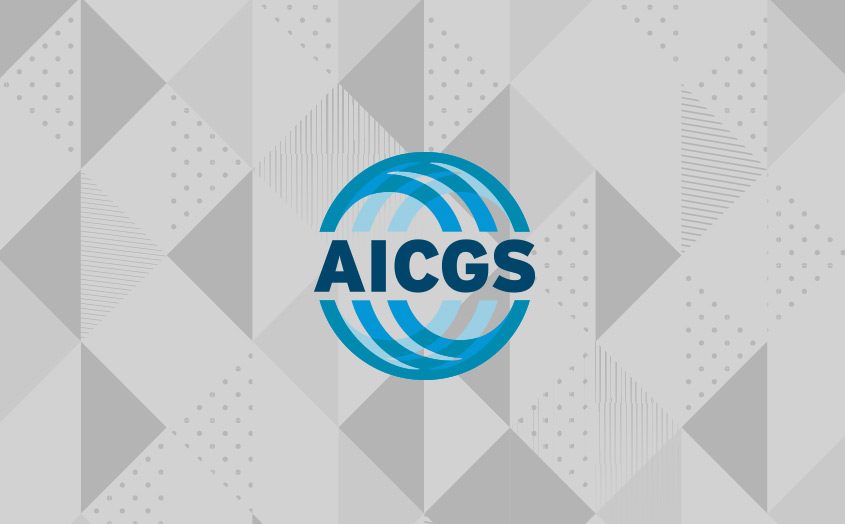
The Franco-German Elysée Treaty at Fifty: A Model for Others?

Lily Gardner Feldman
Senior Fellow
Dr. Lily Gardner Feldman is a Senior Fellow at AICGS. She previously served as the Harry & Helen Gray Senior Fellow at AICGS and directed the Institute’s Society, Culture & Politics Program. She has a PhD in Political Science from MIT.
From 1978 until 1991, Dr. Gardner Feldman was a professor of political science (tenured) at Tufts University in Boston. She was also a Research Associate at Harvard University’s Center for European Studies, where she chaired the German Study Group and edited German Politics and Society; and a Research Fellow at Harvard University’s Center for International Affairs, where she chaired the Seminar on the European Community and undertook research in the University Consortium for Research on North America. From 1990 until 1995, Dr. Gardner Feldman was the first Research Director of AICGS and its Co-director in 1995. From 1995 until 1999, she was a Senior Scholar in Residence at the BMW Center for German and European Studies at Georgetown University. She returned to Johns Hopkins University in 1999.
Dr. Gardner Feldman has published widely in the U.S. and Europe on German foreign policy, German-Jewish relations, international reconciliation, non-state entities as foreign policy players, and the EU as an international actor. Her latest publications are: Germany’s Foreign Policy of Reconciliation: From Enmity to Amity, 2014; “Die Bedeutung zivilgesellschaftlicher und staatlicher Institutionen: Zur Vielfalt und Komplexität von Versöhnung,” in Corine Defrance and Ulrich Pfeil, eds., Verständigung und Versöhnung, 2016; and “The Limits and Opportunities of Reconciliation with West Germany During the Cold War: A Comparative Analysis of France, Israel, Poland and Czechoslovakia” in Hideki Kan, ed., The Transformation of the Cold War and the History Problem, 2017 (in Japanese). Her work on Germany’s foreign policy of reconciliation has led to lecture tours in Japan and South Korea.
The fiftieth anniversary of the 1963 Elysée Treaty provides occasion for reflection on the larger meaning of this landmark for Franco-German relations, but also raises the question of whether its benefits might help other pairs of countries struggling with issues of reconciliation.
The Franco-German treaty was viewed subsequently by the German government as a template for the development of its relations with Poland, particularly after the fall of the Berlin Wall in 1989, but the treaty may also have relevance for relations between Japan and South Korea, particularly at a time of heightened tension over territorial issues, Japanese history textbook content, and the inadequate Japanese response (political, social, economic) to the plight of South Korean women used as sex slaves (“comfort women”) during World War II.
In times of crisis in bilateral ties, the idea of a comprehensive cooperation treaty could be the necessary “game changer” that unlocks paralyzed Japanese-South Korean relations by injecting a totally new idea into the debate. Observers of Japan have floated the issue of Japanese Prime Minister Shinzo Abe “doing a Nixon” by undertaking the totally unexpected for a conservative government. President Nixon’s 1971-72 opening to China, the staunchest foe of the U.S. at the time, was a major breakthrough that led to the normalization of ties.
The Long-Term Importance of Franco-German Institutions
Personal relations and individual commitment on the part of government leaders made a significant difference in Franco-German relations in the post-war world, as the contrast in General de Gaulle’s relations with Chancellor Adenauer and Chancellor Erhard demonstrate most starkly. Yet, de Gaulle recognized that partnership had to be anchored in something less subject to change and chance than personal chemistry and leadership. In addition to his reasoning that a treaty would place distance between Germany and the U.S. immediately, and preempt any German unilateralism in the East, one of de Gaulle’s main motivations for the 1963 Elysée Treaty was to embed Germany for the long-term bilaterally and to make relations more predictable through the creation of permanent institutions. De Gaulle went on to be disappointed in the treaty itself after the Bundestag insisted on the preamble that emphasized Germany’s transatlantic ties; and he compared treaties to young girls and roses, who can fade quickly.
Despite such disillusion, the institutions that developed from the 1963 treaty proved to be highly durable, bearing out Adenauer’s response to de Gaulle’s notion of ephemeral roses: “I know roses. And the plants with the most thorns are the most resistant. The roses [in my garden] survived the winter brilliantly. This friendship between France and Germany is like a rose that will always have buds and flowers.” De Gaulle was moved already in July 1963 to revise his initial metaphor with the following words: “The treaty is neither a rose nor a rose bush, but a rose garden. A rose barely lasts a morning … But with good will a rose garden lasts a long time.”[i]
In addition to regular meetings of officials in education and youth affairs and the creation of the iconic Franco-German Youth Council for bilateral exchanges, the two broad areas broached by the treaty were political relations and defense. On the former, the treaty provided for a minimum of two meetings every year between heads of state and government and four times every year for the foreign ministers. For the latter, defense ministers were to meet four times each year, and chiefs of staff of the armed forces were to come together at least once every two months. Although political relations between 1963 and 1966 were considered “most difficult” between de Gaulle and Erhard, even then the two annual summits did take place, as did foreign ministers’ meetings. By the time of the fortieth anniversary of the treaty in 2003, there had been eighty summit meetings. These meetings were not only opportunities to frame coordinated or common positions across the policy spectrum, but, more importantly, were fora for expressing, managing and resolving substantial differences in bilateral ties and in issues related to the EC/EU.
The policy councils that are now a staple of the relationship for quotidian and crisis issues took longer to institute. The 1963 Elysée Treaty’s twenty-fifth anniversary in 1988 occasioned a major government reassessment in the belief that this framework should not “stiffen into ritual or routine.” Political commitment to further institutionalization was registered in the Kohl-Mitterrand decision made at the fiftieth summit in November 1987 and carried out at the twenty-fifth anniversary meeting in January 1988 to create Franco-German Councils in defense, economics and finance, and culture. By the fall of 1989 there was further political commitment to institutionalization, this time for a council on the environment.
The Model Quality of the Treaty
As a potential model for other relations of reconciliation, the Franco-German Treaty contains five hallmarks of success: 1. It was a public commitment to reconciliation that could be recalled, particularly when there were subsequent tensions in relations; 2. It recognized the centrality of civil society actors, in concert with governments, for the realization of reconciliation, enshrining the multi-level character of reconciliation; 3. It institutionalized relations in key areas, resulting in predictability and reliability, the evolution of habits of cooperation, and the development of personal ties that went beyond the bureaucratic and policy connections; 4. It codified the commitment of the German Chancellor and French President, laying the groundwork for the subsequent development of leadership and friendship tandems between French and German political luminaries; 5. It was cast within the framework of European unity, reminding us that bilateral ties are also influenced by international context and multilateral setting. While the treaty has largely been viewed as a success, it also reveals the obstacles to creation (the Atlanticist-Gaullist debate, resulting in the preamble) and some difficulties in implementation.
Recent Developments in Northeast Asia and the Need for a Treaty Framework
Two main formal settlements define Japanese-South Korean relations, “The Treaty on Basic Relations” of 1965 and the resulting “Agreement Between Japan and the Republic of Korea Concerning the Settlement of Problems In Regard to Property Claims and Economic Cooperation.” In establishing diplomatic relations, the first is very general; in addressing a specific area, the second is quite narrow (and still open to differing interpretations concerning the right to claim of Korean “comfort women,” for example). Neither offers a commitment to reconciliation, an institutionalization of ties in broad areas, a multilateral setting, or a forward-looking approach. The idea of a comprehensive connection has been advanced by some Korean officials: the South Korean Ambassador to Japan, Shin Kak-soo, proposed at a news conference on October 25, 2012 in Tokyo that Japan and South Korea should conclude a treaty modeled after the 1963 Elysée Treaty.
South Korea postponed at the last minute the June 2012 signing of a “General Security Military Information Agreement” with Japan (the first military agreement since the end of Japanese colonial rule in 1945), due to domestic opposition, particularly from older South Koreans who had experienced Japanese occupation. A broader, Elysée-type agreement that confers more mutual benefits and encases sensitive issues like defense in a broader political and economic framework might have a greater possibility of success.
There is a distinct possibility of back-pedaling by the Abe government on previous Japanese official statements aimed at reconciliation and recognizing past aggression. The influence of the political right wing is very strong. It is also menacing, for example in its attacks on former Prime Minister Yukio Hatoyama (Democratic Party of Japan) for his visit to a memorial site for victims of the 1937 Nanjing Massacre perpetrated by the Japanese. However, Abe is also a pragmatist who recognizes the need for stability in relations with South Korea, given the large political and economic benefits, the interests of the U.S., and the challenge of China. In early January, he quickly sent his special envoy, Fukushiro Nukaga, to meet with the newly-elected South Korean President, Geun-hye Park, with a reconciliatory message.
South Korean leader Park responded by looking to both the past and the future: “I hope we can make a mutual effort to build trust based on people’s sentiment and strengthen our ties in various fields…Both sides should openly and honestly look at history and strive for a future of reconciliation and cooperation.” While recognizing the requirements of mutuality on the part of both governments and societies, she did not exclude one of the golden rules of reconciliation: as the German reconciliation example demonstrates, it is often the victim who takes decisive initiatives. A comprehensive approach à la Elysée Treaty could be the South Korean game changer, if a Nixonian gesture is not forthcoming.
[i] The text of the exchange is in André Passeron, De Gaulle Parle 1962-1966 (Paris: Fayard, 1966), pp. 338-341.







